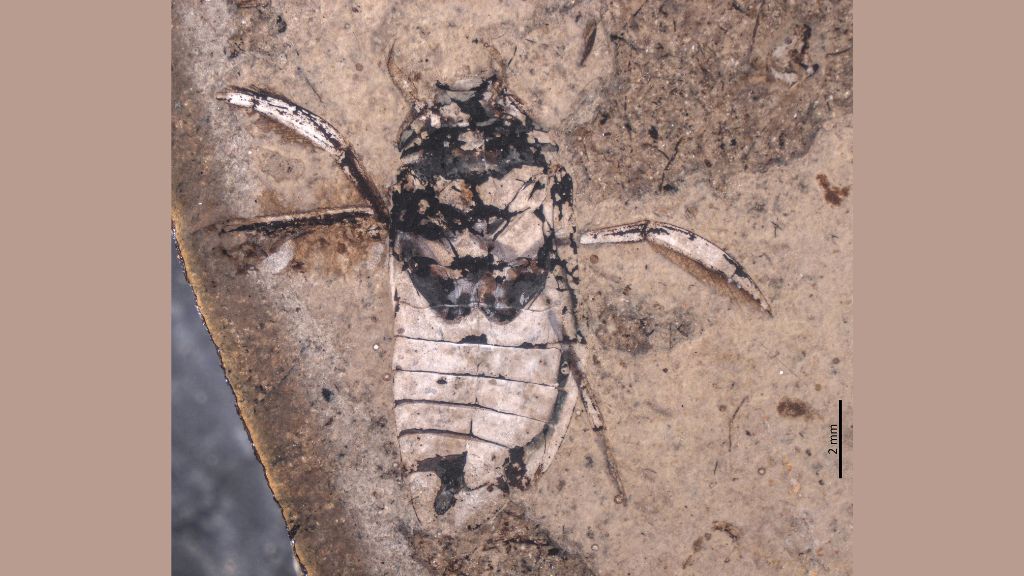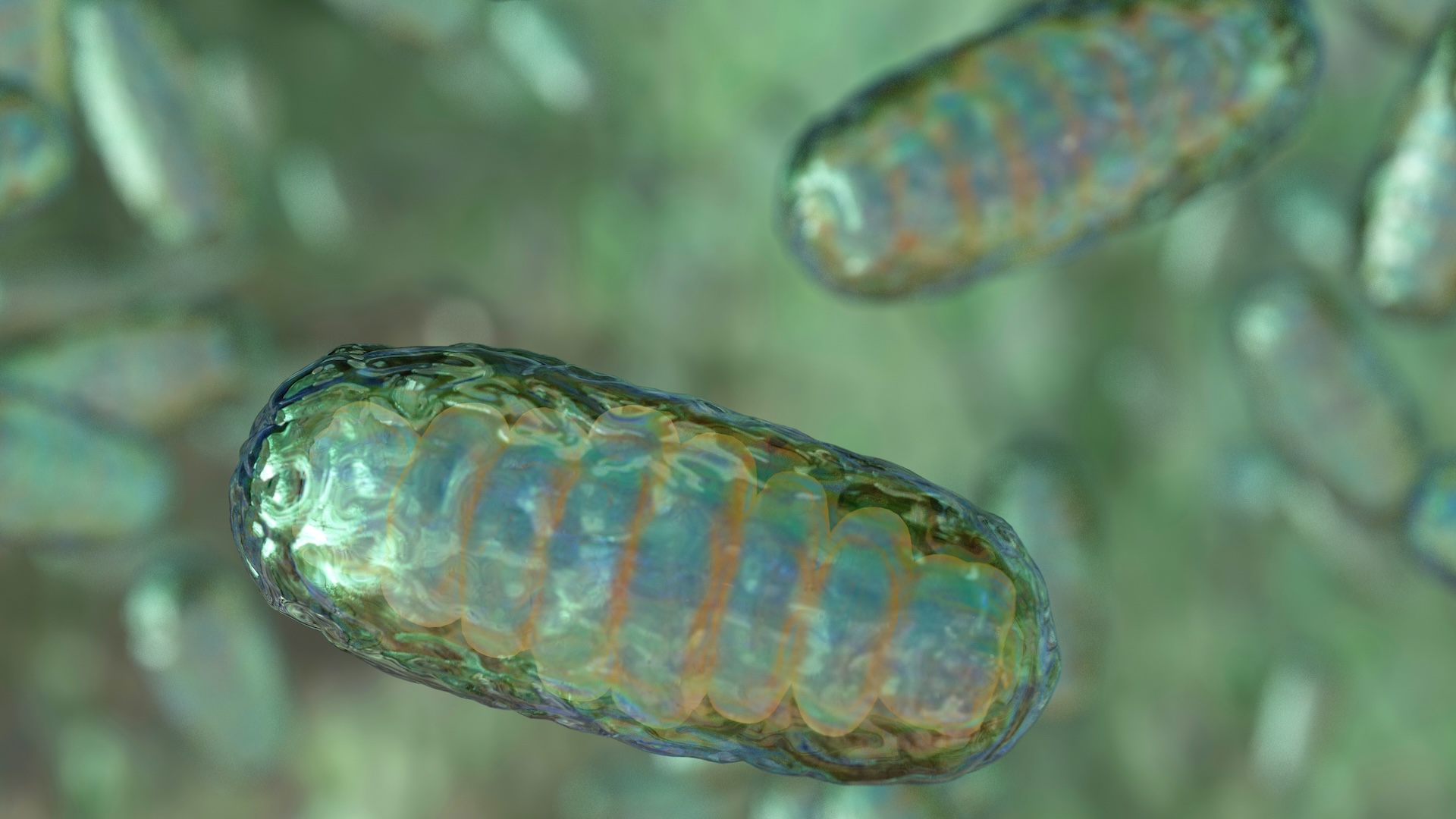Jurassic insect wore eggs on its legs, fossils show
The fossils were found in northeastern China.

Insects that lived 160 million years ago wore clusters of eggs dangling off their legs, like grapes hanging from vines. Scientists recently discovered evidence of this parental behavior in remarkably well-preserved fossils that may be the earliest example of brood care — in which a parent protects their eggs or young offspring by carrying them — in an insect species.
Researchers excavated the insect fossils from the Haifanggou Formation, a fossil-filled rock deposit near the village of Daohugou in northeastern China. A wide variety of fossils have been recovered from the site in the past, including the preserved remains of feathered dinosaurs, ancient mammals, giant fleas and long-proboscid scorpionflies.
In a study published Wednesday (July 13) in the journal Proceedings of the Royal Society B: Biological Sciences, researchers analyzed nearly 160 fossilized Karataviella popovi, an extinct species of water bug with oar-like hind legs. The fossils — which the study authors called "exceptional" — are 163.5 million years old, meaning they date to the middle of the Jurassic period (201.3 million to 145.5 million years ago).
Among these fossils, the team identified 30 adult female specimens with a cluster of eggs anchored to their left "mesotibia," the middle leg in their trio of left-side legs. The densely-packed eggs were arranged in five or six staggered rows, with six to seven eggs per row, each attached via a short "egg stalk." Each egg measures about 0.04 to 0.05 inches (1.14 to 1.20 millimeters) across — a fairly hefty size considering that K. popovi adults only measure roughly 0.5 inches (12.7 mm) long.
Related: Lost fossil 'treasure trove' rediscovered after 70 years

K. popovi females likely laid the eggs directly onto their legs by first secreting a sticky mucus and then executing "specific bending movements of the abdomen" to expel the eggs onto the appropriate limb, the study authors hypothesized. "The unoccupied right mesotibia might have been used to maintain balance when swimming and feeding," they wrote in their report.
The water bugs' massive eggs likely contained an ample supply of nutrients for their offspring — but laying large eggs also comes with a cost, the authors noted. Large eggs are more difficult to aerate with oxygen than small eggs, due to their low surface area to volume ratio. It may be that, by carrying eggs on their legs and allowing the eggs to gently jiggle on their stalks, K. popovi maximized the flow of oxygen from the surrounding water to their developing offspring.
Get the world’s most fascinating discoveries delivered straight to your inbox.
"To our knowledge, carrying a cluster of eggs on [one] leg is a unique strategy among insects, but is not unusual in aquatic arthropods," meaning crustaceans, the study authors wrote. "Our finding pushes back the evidence of definitive brooding behaviour in insects by almost 38 million years, which are helpful for understanding the evolution and adaptive significance of brood care in insects."
Originally published on Live Science.

Nicoletta Lanese is the health channel editor at Live Science and was previously a news editor and staff writer at the site. She holds a graduate certificate in science communication from UC Santa Cruz and degrees in neuroscience and dance from the University of Florida. Her work has appeared in The Scientist, Science News, the Mercury News, Mongabay and Stanford Medicine Magazine, among other outlets. Based in NYC, she also remains heavily involved in dance and performs in local choreographers' work.
